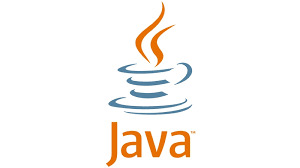#LIFO Method
Text
Understanding the Kübler-Ross Change Curve in the Workplace

Understanding the reactions of employees is essential for leaders and businesses to be able to manage change efficiently. One of the models that helps to understand the emotional process of change is the Kubler - Rose Change Curve
0 notes
Link
LIFO method assumes that the last items acquired are the first items sold, therefore cost of goods sold is based on most recent costs incurred, it is used to reflect current costs and minimize inflation impact on cost of goods sold and ending inventory value. - Definepedia
0 notes
Text
Ministry of Health Supply Chain Management Assistant Job

Ministry of Health Supply Chain Management Assistant Job
Supply Chain Management Assistant Job, Current Supply Chain Jobs In Kenya 2022,
SUPPLY CHAIN MANAGEMENT ASSISTANT Terms of Service: 18-Month contract
Work Station: NBTTS HQ-Nairobi
Requirements for appointment to this post a candidate must have:
- Diploma in Purchasing and Supply Chain Management from a recognized institution
- Experience in recording of commodities in line with government regulations and procedures
- Managing the stores using the LIFO and FIFO method
- I year post-training experience in a government institution
- Proficiency in computer applications
Responsibilities
Reports to Supply Chain Management Officer
- Receiving of consignments/donations from suppliers
- Stores inventory management
- Controlling the dispatch of commodities, reagents and supplies to all the regions and satellites.
- Operating procurement functions through the IFMIS system.
- Managing the stores using the LIFO and FIFO method to avoid bulk buying of goods and also expiry.
- Record keeping and filing of all office documents.
- Any duties assigned by the supervisor
Note: The best supply chain management assistant will be selected based on qualifications and relevant experience.
How to Apply
The terms of reference on the posts can be accessed on the Ministry’s website www.health.go.ke and the Public Procurement Information Portal http://www.tenders.go.ke
Applications should include the following; Cover letter and current CV with names and telephone contacts, Copies of academic and professional certificates, Photocopy of ID and Testimonials/ Recommendation. Interested and qualified persons are required to make their applications ONLINE through the Ministry’s Email Address: [email protected]. so as to reach the Ministry on or before 24th August, 2022 11:00 am.
PRINCIPAL SECRETARY
MINISTRY OF HEALTH
N.B: Looking For A New Job? Find Your Next Job With Us. Click Here To Register Your CV. It's Free.
Cynthia Chebet2022-08-12T13:38:04+03:00
Read the full article
15 notes
·
View notes
Text
Benefits of Tally Prime Gold: A Comprehensive Overview
Tally Prime Gold is the multi-user version of Tally Prime, designed to cater to the needs of medium to large businesses.
It offers robust features and functionalities that streamline accounting, inventory management, payroll processing, and more.
Enhanced Multi-User Capability
One of the standout features of Tally Prime Gold is its multi-user capability.
Unlike the single-user version, Tally Prime Gold allows multiple users to access the software simultaneously.
This feature is particularly beneficial for businesses with larger teams, as it ensures that different departments can work concurrently without any disruptions.
For example, while one user manages accounts payable, another can handle inventory updates, thereby improving overall productivity and efficiency.
Comprehensive Accounting Solutions
Tally Prime Gold provides comprehensive accounting solutions that cover various aspects of financial management.
It includes functionalities such as:
General Ledger: Manage and track all financial transactions with ease.
Accounts Receivable and Payable: Keep track of money owed by customers and payments due to suppliers.
Bank Reconciliation: Simplify the process of reconciling bank statements with company records.
Financial Reporting: Generate detailed financial reports, including balance sheets, profit and loss statements, and cash flow reports.
These features enable businesses to maintain accurate financial records, ensuring compliance and facilitating better decision-making.
Inventory Management
Effective inventory management is crucial for businesses to avoid stockouts or overstock situations.
Tally Prime Gold offers robust inventory management features that allow businesses to:
Track Inventory Levels: Monitor stock levels in real-time to ensure optimal inventory.
Manage Multiple Warehouses: Keep track of inventory across different locations seamlessly.
Batch and Expiry Management: Manage inventory batches and track expiry dates to reduce wastage.
Stock Valuation: Choose from various stock valuation methods like FIFO, LIFO, and Weighted Average.
These features help businesses optimize their inventory, reduce costs, and improve customer satisfaction by ensuring timely availability of products.
GST Compliance and Taxation
Tally Prime Gold simplifies GST compliance, making it easier for businesses to adhere to tax regulations. Key features include:
GST Billing: Generate GST-compliant invoices effortlessly.
GST Returns: Prepare and file GST returns with ease.
Tax Calculation: Automatically calculate GST and other taxes based on predefined rules.
Audit and Compliance: Conduct regular audits and ensure compliance with the latest tax laws.
By automating tax-related processes, Tally Prime Gold reduces the risk of errors and ensures timely compliance, thereby avoiding penalties.
Payroll Management
Managing payroll can be a complex task, but Tally Prime Gold simplifies it with its robust payroll management features. Businesses can:
Process Salaries: Calculate and process employee salaries, including bonuses and deductions.
Compliance: Ensure compliance with statutory requirements such as PF, ESI, and TDS.
Employee Records: Maintain detailed employee records, including attendance and leave management.
Payroll Reports: Generate various payroll reports for analysis and decision-making.
Efficient payroll management helps businesses streamline HR processes and maintain employee satisfaction.
Real-Time Data Access and Collaboration
With Tally Prime Gold, data is updated in real-time, ensuring that all users have access to the latest information.
This real-time data access enhances collaboration across different departments, leading to better coordination and decision-making.
For instance, sales teams can view current inventory levels while placing orders, ensuring they promise accurate delivery dates to customers.
Enhanced Security and Data Backup
Tally Prime Gold offers enhanced security features to protect sensitive financial data. It includes:
User Access Control: Define user roles and restrict access to sensitive information.
Data Encryption: Ensure data is encrypted and secure from unauthorized access.
Automated Backup: Schedule regular backups to prevent data loss.
These security measures provide peace of mind, knowing that your financial data is safe and secure.
Learn More: - Tally Prime Gold Renewal Price.
0 notes
Text
Exploring Java's Built-in Data Structures: A Beginner's Guide

Introduction:
Java, a versatile and widely used programming language, offers a rich set of built-in data structures that form the backbone of many applications. Understanding these data structures is fundamental for any Java developer, as they provide efficient ways to organise and manipulate data. In this beginner's guide, we'll delve into some of Java's core data structures, exploring their features, usage, and best practices.
Arrays: The Foundation
Arrays are one of the simplest and most fundamental data structures in Java. They represent a fixed-size collection of elements of the same type. Declaring an array in Java is straightforward:
This line of code creates an array of integers with a length of 5. Arrays in Java are zero-indexed, meaning the first element is accessed at index 0, the second at index 1, and so on. You can access and modify elements using square brackets notation:
Arrays are efficient for random access but have a fixed size, which cannot be changed dynamically. Java provides other data structures like ArrayList and LinkedList to overcome this limitation. To kickstart your programming career, consider enrolling in Java Training In Chennai for comprehensive learning and skill development.
ArrayList: Dynamic Arrays
A component of Java's Collection Framework, ArrayList offers dynamic arrays that can enlarge or contract in size as needed. Unlike arrays, ArrayLists can hold elements of different types and automatically resize themselves.
ArrayLists offer efficient methods for adding, removing, and accessing elements. They also provide features like sorting and searching, making them versatile for various applications. However, ArrayLists may incur performance overhead due to resizing operations when they reach capacity.
LinkedList: Linked Data Structure
LinkedList is another data structure provided by Java's Collection Framework. In contrast to arrays, elements are stored in linked lists as nodes, each of which has a reference to the node after it in the sequence. Especially in the centre of the list, this structure makes insertion and deletion operations efficient.
LinkedLists excel in scenarios where frequent insertions and deletions are required, but they may have higher memory overhead than arrays due to the additional memory needed for storing references.
HashMap: Key-Value Pairs
HashMap is a data structure that stores key-value pairs and quickly retrieves values based on their keys. It uses a hashing technique to store and retrieve elements efficiently, making it ideal for scenarios where quick access to data is crucial.
HashMaps offer constant-time performance for basic operations like insertion, deletion, and lookup, assuming a good hash function and proper handling of collisions. However, they do not maintain the order of elements.
HashSet: Unordered Collection Of Unique Elements
HashSet implements the Set interface in Java, representing an unordered collection of unique elements. It uses a hashing technique similar to HashMap to achieve fast insertion, deletion, and lookup operations.
HashSet ensures that each element is unique by internally checking for duplicates before adding them. While HashSet does not maintain the insertion order, it provides constant-time performance for basic operations.
Stack And Queue: Linear Data Structures
Java also implements two essential linear data structures: Stack and Queue.
- The latest In, First Out (LIFO) concept is adhered to by Stack, meaning that the latest piece added is also the first to be withdrawn.
- The First In, First Out (FIFO) principle is adhered to by queues, meaning that the first element added is also the first to be deleted.
These data structures find applications in various scenarios, such as expression evaluation, reversing sequences, and managing tasks in computer algorithms.
Best Practices And Considerations
While Java's built-in data structures offer powerful capabilities, it's essential to understand their strengths, weaknesses, and best practices for efficient usage:
- Choose the right data structure based on your application's requirements. Consider factors like the frequency of insertion, deletion, retrieval operations, memory usage, and performance constraints.
- Understand the time complexity of operations for each data structure. For example, ArrayList provides faster random access but slower insertion and deletion than LinkedList.
- Be mindful of synchronisation if dealing with multi-threaded applications. Java provides synchronised versions of some data structures in the `java.util.concurrent` package.
- Utilise generics to ensure type safety and reduce the risk of runtime errors when working with collections.
-Consider using wrapper classes like `Collections.unmodifiableList()` or `Collections.synchronizedList()` for immutable or thread-safe collections, respectively.
- If you're looking for the Best Software Training Institute in Chennai, look no further than our renowned institution, where expertise meets excellence.
Conclusion
Java's built-in data structures form the backbone of many applications, providing efficient ways to organise, manipulate, and access data. From simple arrays to sophisticated HashMaps and LinkedLists, Java offers a versatile toolkit for developers to tackle various programming challenges. By understanding these data structures' features, usage, and best practices, beginners can lay a solid foundation for building robust and scalable Java applications. So, dive into Java's world of data structures and unlock the full potential of your programming endeavours.
#Java#softwaretraining#education#infycletechnologies#javascript#javatpoint#javaprogramming#java burn#javaris x
1 note
·
View note
Text
Choosing the Right Pallet Racking System for Your Warehouse Needs
Introduction:
Pallet racking systems are essential components of warehouse infrastructure, providing efficient storage solutions for palletized goods. Selecting the appropriate pallet racking system is crucial for maximizing storage space, optimizing inventory management, and ensuring operational efficiency. This article explores key factors to consider when choosing the right pallet racking system for your warehouse needs, helping warehouse managers make informed decisions to meet their storage requirements effectively.

Understanding Pallet Racking Systems:
Pallet racking systems are designed to store palletized goods in a structured and accessible manner, allowing for efficient loading, unloading, and retrieval of inventory. These systems typically consist of upright frames, horizontal beams, and decking components configured to accommodate pallets of varying sizes and weights. Different types of pallet racking systems offer unique benefits and features to suit diverse warehouse environments and storage requirements.
Factors to Consider:
1. Storage Requirements: The first step in choosing the right pallet racking system is to assess your warehouse's storage requirements. Consider factors such as inventory volume, SKU diversity, pallet dimensions, and throughput rates. Understanding your storage needs will help determine the type and configuration of pallet racking system that best aligns with your operational goals and space constraints.
2. Space Utilization: Efficient space utilization is paramount in warehouse operations, as it directly impacts storage capacity and operational efficiency. Evaluate your warehouse layout, ceiling height, aisle widths, and floor space availability to determine the most suitable pallet racking system. Systems such as selective racking, narrow aisle racking, and double-deep racking offer different levels of space utilization and accessibility to accommodate varying warehouse configurations.
3. Load Capacity: Consider the weight and dimensions of the palletized goods to be stored when selecting a pallet racking system. Ensure that the chosen system can safely support the anticipated loads without exceeding its load capacity limits. Factors such as pallet weight, load distribution, and material handling equipment compatibility should be taken into account to prevent overloading and structural failures.
4. Accessibility and Retrieval Speed: Accessibility to inventory and retrieval speed are critical considerations in warehouse operations, particularly for fast-moving goods or order picking processes. Evaluate the frequency and urgency of access to stored items to determine the most appropriate racking system. Systems such as drive-in racking, push-back racking, and flow racking offer different levels of accessibility and retrieval speed to accommodate varying storage and retrieval requirements.
5. Product Handling Characteristics: Consider the handling characteristics of the products being stored, such as fragility, perishability, and handling requirements. Some pallet racking systems, such as flow racking or gravity flow racking, are suitable for perishable goods or high-density storage applications where FIFO (first in, first out) inventory rotation is essential. Evaluate whether specialized features such as FIFO or LIFO (last in, first out) retrieval methods are necessary to meet your product handling needs.
6. Future Expansion and Flexibility: Anticipate future growth and changes in inventory requirements when selecting a pallet racking system. Choose a system that offers scalability and flexibility to accommodate future expansion or modifications without significant disruptions to operations. Adjustable beam heights, modular components, and compatibility with add-on accessories are essential factors to consider for long-term flexibility and adaptability.
Conclusion:
Choosing the right pallet racking system is a critical decision for warehouse managers, as it directly impacts storage capacity, operational efficiency, and inventory management. By carefully assessing storage requirements, space utilization, load capacity, accessibility, product handling characteristics, and future expansion needs, warehouse managers can select a pallet racking system that aligns with their specific operational goals and warehouse constraints. Moreover, consulting with industry experts and leveraging advanced technologies can provide valuable insights and assistance in making informed decisions. Ultimately, investing in the right pallet racking system contributes to optimizing warehouse space utilization, enhancing inventory management capabilities, and supporting overall operational efficiency in the long run.
0 notes
Text
The Essential Backdrop of Industrial Shelving in E-commerce Warehousing
In the bustling domain of e-commerce, the storage facilities are the unseen backbone, and shelving—the unsung hero. Efficient storage solutions are not just an operational necessity; they play a pivotal role in the business's overall success, impacting everything from inventory control to order fulfillment. For warehouse managers and retailers navigating the complex nuances of e-commerce logistics, understanding the importance of shelving is akin to deciphering the Rosetta Stone of supply chain efficiency.

The Unsung Spotlight of Shelving in E-commerce
Tucked away in the labyrinth of shelving units are the critical components that underpin the streamlined facade of the e-commerce industry. The evolution of shopping patterns has catapulted the need for sophisticated storage infrastructures that can handle the dynamic nature of consumer demands. But beyond mere storage, shelving serves as a keystone in preserving the integrity of products, optimizing space, and enabling the rapid retrieval of items that satiate the insatiable appetite for instant gratification.
For e-commerce businesses, the warehouse is no longer just a repository; it’s a high-stakes battleground where order accuracy, speed, and customer satisfaction are the trophies. Efficient shelving can catalyze these victories. However, the challenges are equally unparalleled. From the microscopic organization of items to the macroscopic aspect of managing warehouse space, every inch, and item matters.
The Encompassing Arm of Industrial Shelving
The concept of industrial shelving is not just a mere upgrade; it's a paradigm shift in storage dynamics. Designed for the rigors of e-commerce, industrial shelving exudes a robustness capable of withstanding the relentless pace of the online market. They are the maestros of multipurpose—each shelf, each unit, designed for a myriad of goods of varying weights, shapes, and sizes.
With a sturdy backbone and a mind for customization, industrial shelving is not just a storage utility; it's a strategic asset that can be tailored to match the specific needs of e-commerce, whether it's handling seasonal peaks or expanding product ranges. The industrial shelving enterprise offers a versatile repertoire, combining the tenets of durability with the flexibility to adapt to the ebb and flow of inventory requirements.
The Strategic Art of Space Maximization
In the ballet of warehousing, space is the prima donna. Smart shelving tactics can transform even the most confined of spaces into an orchestral harmony of order and efficiency. Industrial shelving, with its modular design, encourages a vertical symphony that elevates the storage capabilities without the need for horizontal sprawl. Each strategic arrangement becomes a choreography of accessibility, ensuring that high-demand goods are within arm’s reach, orchestrating the perfect flow in the picking process.
Such vertical integration is not merely a one-time maneuver but a dynamic strategy that can grow alongside the business. The shelving becomes the inventory's storyteller, each tier a new chapter in the warehouse's vertical saga.
The Fulcrum of Fast and Accurate Order Fulfillment
The speed at which orders are processed and the accuracy with which they are fulfilled are the twin pillars upon which customer satisfaction rests. The right shelving solution can reinforce these pillars, speeding up the supply chain's clockwork and ensuring that the right items depart from warehouse shelves to doorsteps with precision. Industrial shelving, with its ability to facilitate a variety of storage methods from FIFO to LIFO, becomes the rulebook of the order fulfillment process, a staunch ally in ensuring that the first-in are also the first-out.
The partnership of industrial shelving with cutting-edge technology only serves to fortify these principles, leading to order fulfillment standards that are not just fast but unfailingly accurate, culminating in delighted customers and repeat business.
The Fusion of Tech and Shelving for Seamless Operations
While the foundation of shelving remains steadfast, the integration of technology builds an operational superstructure. Warehouse Management Systems (WMS) mesh seamlessly with industrial shelving, crafting a digital symphony of inventory control, and shelving solutions are not just passive receptacles; they are active participants in the modern warehouse ecosystem, communicating stock levels and pick paths in harmony with their robotic counterparts.
Such a fusion is not just a technological dalliance; it's a necessity that can govern the difference between being a leader and a laggard in the e-commerce domain. From barcode scanning technologies to real-time inventory tracking, the integration of tech with shelving is a narrative of operational finesse.
A Well-Placed Shelf: Selecting and Synchronizing Shelving for Success
The shelf soul-searching begins with the quest to choose the right shelving solution for your e-commerce hub. It's not just about the shelves; it's about the vision. The selected shelving must harmonize with that vision, accommodating not just the current state of the inventory but the aspirations for growth. It's not just a static choice but a dynamic one that adapts and evolves, ensuring that the warehouse keeps pace with the business.
The art of shelving implementation is akin to a carefully choreographed dance. From the initial setup to the ongoing maintenance, each step is crucial. It's about crafting an experience that is not just efficient but also sustainable in the long run, weathering the e-commerce storms and celebrating its sunny days, all the while holding the fort within the industrial shelving.
A Legacy of Shelves: Investing in E-commerce Success
The role of shelving in the narrative of e-commerce is much more than utilitarian; it is transformational. It's about investing in not just storage but in the future of an e-commerce enterprise. The legacy of shelves echoes beyond the warehouse walls, resonating in the orders filled, the customers satisfied, and the business’s growth.
The right shelving solution, particularly industrial shelving, is more than a convenience—it's a commitment to the efficiency, organization, and scalability of the e-commerce juggernaut. It's a testament to how the unsung hero can script the most compelling chapters in the e-commerce success story.
0 notes
Text
How to Choose the Best Modern Warehouse Service Provider

In today's rapidly evolving business landscape, efficient warehousing and distribution are critical components of success for companies across industries. Modern warehouse service providers play a pivotal role in facilitating seamless logistics operations, ensuring timely delivery, and optimizing inventory management. However, with a plethora of options available, selecting the right warehouse service provider can be a daunting task. To help businesses make informed decisions, here are essential factors to consider when choosing the best modern warehouse service provider:
Location and Accessibility: The proximity of the warehouse to your suppliers, customers, and transportation hubs significantly impacts logistical efficiency and cost-effectiveness. Choose a warehouse strategically located to minimize transit times and transportation expenses while ensuring convenient access for inbound and outbound shipments.
Facility Infrastructure and Technology: Evaluate the warehouse's infrastructure and technology capabilities to meet your specific requirements. Modern warehouses equipped with advanced technologies such as RFID tracking, inventory management systems, and automation solutions streamline operations, enhance visibility, and improve accuracy.
Scalability and Flexibility: Opt for a warehouse service provider capable of scaling operations according to your business needs. Whether you require seasonal storage, rapid expansion, or customized fulfillment services, choose a partner that offers flexibility to accommodate fluctuations in demand without compromising service quality.
Security and Compliance: Prioritize warehouse facilities that adhere to rigorous security protocols and regulatory compliance standards. Look for features such as 24/7 surveillance, access controls, fire suppression systems, and compliance certifications (e.g., ISO, GMP) to safeguard your inventory and mitigate risks.
Inventory Management Capabilities: Effective inventory management is crucial for optimizing stock levels, minimizing carrying costs, and preventing stockouts or overstock situations. Evaluate the warehouse's inventory management capabilities, including real-time tracking, cycle counting, lot control, and FIFO/LIFO inventory methods.
Service Level Agreements (SLAs) and Performance Metrics: Establish clear SLAs and performance metrics with your warehouse service provider to ensure alignment with your operational goals and expectations. Key metrics to consider include order fulfillment accuracy, on-time delivery rates, inventory accuracy, and responsiveness to inquiries or issues.
Customer Service and Communication: Seamless communication and responsive customer service are essential for resolving issues promptly and maintaining a transparent partnership. Evaluate the warehouse provider's communication channels, escalation procedures, and customer support capabilities to ensure a smooth collaboration.
Sustainability Initiatives: Increasingly, businesses are prioritizing sustainability in their supply chain operations. Evaluate the warehouse provider's sustainability initiatives, such as energy-efficient practices, waste reduction measures, and eco-friendly packaging solutions, to align with your environmental goals and corporate values.
Industry Experience and Reputation: Assess the warehouse service provider's industry experience and reputation within your sector. Look for testimonials, case studies, and client references to gauge their track record of success, reliability, and customer satisfaction.
Cost Structure and Value-added Services: Compare the cost structures of different warehouse service providers while considering the value-added services they offer. Look beyond the base storage fees and evaluate additional services such as order picking, kitting, packaging, labeling, and returns management to optimize cost-effectiveness and operational efficiency.
In conclusion, selecting the best modern warehouse service provider requires careful consideration of various factors ranging from location and infrastructure to scalability, security, and customer service. By conducting thorough due diligence and aligning your specific requirements with the provider's capabilities, you can establish a strategic partnership that enhances your supply chain resilience, agility, and competitiveness in today's dynamic business environment.
0 notes
Text
Navigating the Digital Frontier: A Comprehensive Crypto Tax Guide for Accountants
In the rapidly evolving world of cryptocurrency, staying abreast of tax regulations is imperative for accountants who wish to provide top-notch advisory services. The digital currency landscape presents unique challenges and opportunities in tax planning and compliance. This guide delves into the essentials of crypto taxation, offering clear insights and actionable strategies to help accountants navigate this complex terrain.

Understanding Cryptocurrency and Its Tax Implications
Decoding Cryptocurrency: At its core, cryptocurrency is a digital or virtual currency that uses cryptography for security. Unlike traditional currencies, it operates on decentralized platforms based on blockchain technology.
Taxable Events: The IRS views cryptocurrencies as property, meaning most transactions, including buying, selling, trading, and mining, have tax implications.
Realizing Capital Gains or Losses: Any cryptocurrency exchange for fiat money, goods, services, or another crypto results in a capital gain or loss, which must be reported.
Key Tax Considerations for Crypto Transactions
Keeping Detailed Records: Maintaining meticulous records is paramount. Accountants should track the date of each transaction, amounts in USD, and the purpose of the transaction, whether for investment or payment.
FIFO and LIFO Accounting Methods: The First In, First Out (FIFO) and Last In, First Out (LIFO) methods can be applied to calculate gains and losses, offering different tax outcomes.
Airdrops, Forks, and Mining Income: These specific crypto activities require special attention, as they can trigger ordinary income taxes, and their reporting varies based on individual circumstances.
Taxation of Staking, DeFi, and NFTs
Understanding the Nuances: The rise of decentralized finance (DeFi), staking, and non-fungible tokens (NFTs) has added complexity to crypto taxation.
Staking Rewards and Interest: Income received from staking or DeFi interest must be reported as ordinary income at its fair market value at the time of receipt.
NFT Taxation: The sale or exchange of NFTs, digital representations of assets, is taxable, and their unique nature may bring valuation challenges.
Strategic Tax Planning and Compliance
Leveraging Tax Loss Harvesting: Recognizing the volatile nature of cryptocurrency, tax loss harvesting can mitigate tax liabilities by strategically realizing losses.
Staying Updated with Regulations: The regulatory landscape for cryptocurrency is still in flux. Accountants must stay informed about new laws and guidelines to ensure compliance.
Utilizing Crypto Tax Software: Adopting specialized software can streamline the process of tracking transactions, calculating gains/losses, and filling out tax forms.
Conclusion
In the digital age, accountants are pivotal in guiding clients through the complexities of crypto tax planning and compliance. By understanding the fundamental aspects of cryptocurrency taxation and staying informed on regulatory changes, accountants can provide valuable advice, helping clients navigate the digital frontier with confidence.
Equipping oneself with knowledge and leveraging technological tools are key strategies in managing the intricacies of cryptocurrency taxation efficiently. As the digital currency landscape continues to evolve, accountants who are well-versed in these nuances will stand at the forefront of this financial revolution, offering expert guidance in an increasingly complex domain.
#Crypto Tax Guide#accounting training#accounting training melbourne#tax return melbourne#accounts nextgen#accounting training courses#accounting internship#tax accountant programs
0 notes
Text

How Successful Organizations Identify and Maximize Employee Strengths
In this blog we will discuss how successful companies recognize and leverage strengths of their employees to boost innovation, engagement and overall effectiveness.
0 notes
Text
warehouse storage dubai

warehouse storage dubai
Warehousing plays a pivotal role in Dubai's bustling economy, serving as a hub for trade and commerce. Efficient warehouse storage is crucial for businesses to streamline operations and meet customer demands. Here, we explore strategies to optimize warehouse storage in Dubai.
Location Selection:
Choosing the right location for your warehouse storage dubai is paramount. Consider proximity to major transportation routes, ports, and industrial zones to enhance accessibility and reduce transportation costs.
Utilization of Vertical Space:
With land being a premium commodity in Dubai, maximizing vertical space is imperative. Implementing tall storage racks and mezzanine floors can significantly increase storage capacity without expanding the footprint.
Efficient Inventory Management:
Employing advanced inventory management systems allows for precise tracking of stock levels, reducing the risk of stockouts or overstocking. Utilize barcode technology and automated systems for faster processing and accurate inventory control.
Implementing FIFO and LIFO Systems:
Adopting First In, First Out (FIFO) or Last In, First Out (LIFO) inventory management methods ensures proper rotation of goods, minimizing the risk of spoilage or obsolescence.
Temperature-Controlled Storage:
In Dubai's hot climate, temperature-controlled storage facilities are essential for preserving perishable goods and maintaining product quality. Invest in climate control technology to safeguard sensitive inventory.
Conclusion:
By implementing these strategies, businesses can optimize warehouse storage Dubai, ensuring seamless operations and timely fulfillment of customer orders. Embracing innovation and leveraging technology are key to staying ahead in the dynamic landscape of warehouse management.
#warehouse storage dubai#storage boxes dubai#storage dubai furniture#storage services in dubai#storage space in dubai
1 note
·
View note
Text
How to Think Like a Programmer: Understanding Data Structures

Introduction:
Are you fascinated by the world of computers and coding? Do you aspire to build a career in computer science? If so, understanding data structures fundamentals is an essential skill that will set you on the right path. In this blog, we'll explore what data structures are, why they're crucial for aspiring programmers, and how you can start thinking like a programmer by mastering them.
1. What are Data Structures?
Data structures are a way of organizing and storing data in a computer so that it can be used efficiently.
Think of data structures as containers that hold data in a structured manner, making it easier to access, manipulate, and process.
2. Why is Data Structures Important?
Data structures form the foundation of structured programming principles.
They help optimize algorithms and improve the efficiency of software applications.
Understanding data structures is crucial for solving complex problems and writing efficient code.
3. Data Structure Fundamentals
Arrays: An ordered collection of elements accessed using an index.
Linked Lists: A linear collection of elements where each element points to the next.
Stacks: A Last In, First out (LIFO) data structure where elements are added and removed from the same end.
Queues: A First In, First out (FIFO) data structure where elements are added at one end and removed from the other.
4. Structured Programming Principles
Modularity: Breaking down a program into smaller, manageable modules or functions.
Abstraction: Hiding the complexity of implementation details and exposing only essential features.
Encapsulation: Bundling data and methods that operate on that data into a single unit, known as a class.
Reusability: Writing code in a way that it can be reused in different parts of the program or in other programs.
5. How to Think Like a Programmer
Start by understanding the problem thoroughly before diving into coding.
Choose the right data structure based on the problem requirements.
Analyze the time and space complexity of algorithms to ensure efficiency.
Practice problem-solving regularly to sharpen your skills and intuition.
By mastering data structures and data structured programming principles, you'll not only become a better programmer but also open doors to exciting career opportunities in computer science. Whether you're pursuing a course, looking for an institute, or seeking training centers, remember that a solid understanding of data structures will be your key to success.
In conclusion, thinking like a programmer involves more than just writing code – it's about understanding the underlying principles that drive efficient and elegant solutions. So, embrace the world of data structures, and embark on your journey to becoming a skilled programmer!
Suggested Blogs:
Java Basics Guide
Python basics to advanced
Java Programming
#Python basics to advanced#Java Basics Guide#data structured programming#data structures fundamentals#data structure
0 notes
Text
Business Tax Planning Strategies
Effective business tax planning is essential for maximizing profits and minimizing tax liabilities. Strategic tax planning allows businesses to take advantage of available deductions, credits, and incentives while ensuring compliance with tax regulations.
Here are key business tax planning strategies to help your business navigate the complex landscape of taxation:
Entity Structure Optimization: Choosing the right business entity structure is a foundational step in tax planning. Each structure—sole proprietorship, partnership, corporation, or LLC—has different tax implications. Evaluate the advantages and disadvantages of each based on factors such as liability protection, ease of administration, and tax treatment. For example, pass-through entities like S corporations and LLCs often provide tax advantages by allowing profits and losses to pass through to the owners’ tax returns.
Take Advantage of Tax Credits and Deductions: Identify and leverage available tax credits and deductions. Research industry-specific credits, such as the Research and Development (R&D) Tax Credit, which rewards businesses for innovation. Deductions for business expenses like equipment, travel, and education can significantly reduce taxable income. Stay updated on changes in tax laws to ensure you’re maximizing benefits. For instance, the Tax Cuts and Jobs Act (TCJA) introduced changes that businesses should consider when planning deductions and credits.
Strategic Timing of Income and Expenses: Manage the timing of income and expenses to optimize tax liability. For instance, defer income or accelerate expenses to lower taxable income in a high-profit year. Conversely, in a year with expected losses, accelerating income and deferring expenses may offset losses against higher income years. This timing strategy requires careful cash flow management but can result in substantial tax savings over time.
Invest in Tax-Efficient Retirement Plans: Explore tax-advantaged retirement plans for business owners and employees. Contributions to plans like 401(k)s and Simplified Employee Pension (SEP) IRAs can be deducted from taxable income. Additionally, these plans offer a valuable employee benefit that aids in talent retention. Evaluate the eligibility criteria, contribution limits, and employee participation requirements to choose the most tax-efficient retirement plan for your business.
Utilize Section 179 Depreciation: Section 179 allows businesses to deduct the cost of qualifying equipment and property in the year of purchase rather than depreciating it over time. This can provide immediate tax relief for capital expenditures. Keep in mind the annual limits and eligible property criteria when utilizing Section 179. This strategy is particularly beneficial for businesses looking to invest in equipment and technology.
Tax-Efficient Inventory Management: Optimize inventory management to reduce taxable income. Methods like the Last-In, First-Out (LIFO) or the lower of cost or market (LCM) can impact the valuation of inventory for tax purposes. Regularly review inventory levels to identify obsolete or slow-moving items that may be written off or discounted. Efficient inventory management not only improves cash flow but also reduces taxable income.
Explore Tax-Favored Investments: Invest in assets that provide tax advantages, such as municipal bonds or Qualified Opportunity Zones (QOZ). These investments can offer tax-free income or defer capital gains. Evaluate the risk and returns associated with tax-favored investments to align them with your business’s financial goals and risk tolerance.
In conclusion, effective business tax planning involves a comprehensive approach that considers entity structure, tax credits, strategic timing of income and expenses, retirement plans, Section 179 depreciation, inventory management, and tax-favored investments. By implementing these strategies and hiring experts offering services of tax planning for business owners in Mayfield Heights OH businesses can optimize their tax positions, maximize deductions, and ultimately enhance their overall financial health.
0 notes
Text
An algorithm is simply a set of instructions followed to solve a problem or perform a task. Learning about algorithms and how they work is essential for anyone seeking to understand the world of technology and how it operates.

One of the basic concepts to learn about algorithms is the idea of computational thinking. This is the ability to break down a problem into smaller, more manageable parts and design a step-by-step solution to solve it. Understanding how to think computationally is essential for developing algorithms that can efficiently solve problems.
Additionally, learning about different types of algorithms, such as sorting algorithms or searching algorithms, can provide valuable insight into how different problems can be solved using different techniques. For example, understanding how a sorting algorithm like bubble sort works can help in sorting data efficiently, while learning about a searching algorithm like binary search can help in quickly finding a target value in a sorted list.
One of the most basic and popular types of data structures is an array. They consist of a contiguous block of memory elements, each identified by an index or key. Arrays allow efficient random access to elements, making them suitable for tasks such as storing and retrieving data.
Linked lists, on the other hand, are dynamic data structures that consist of nodes connected by pointers or references. Data and a pointer to the next node are stored in each of these nodes.
Stacks and queues are data structures that follow the LIFO (Last-In, First-Out) and FIFO (First-In, First-Out) principles, respectively. Stacks are used for operations such as function calls, whereas queues are commonly employed in scheduling and resource allocation
Trees are data structures with a hierarchical structure made up of nodes connected by edges. They are suitable for representing hierarchical relationships and organizing data in a structured manner.
Learning about algorithms is essential for anyone seeking to understand the world of technology and how it operates. From computational thinking to understanding algorithm complexity and efficiency, grasping the basics of algorithms can provide valuable insights into how problems can be solved efficiently and effectively.
TCCI provides the best training in programming courses through different learning methods/media is located in Bopal Ahmedabad and ISCON Ambli Road in Ahmedabad.
For More Information:
Call us @ +91 9825618292
Visit us @ http://tccicomputercoaching.com
#computer class in bopal Ahmedabad#computer class in ISKON Ambli Ahmedabad#computer institute in bopal Ahmedabad#computer institute in ISKON Ambli Ahmedabad#computer course in ISKON Ahmedabad
0 notes
Text
Last In, First Out (LIFO): Definition and Examples Explained

In the realm of inventory management and accounting, various methods exist for calculating the cost of goods sold (COGS) and valuing inventory. One such method is Last In, First Out (LIFO), a widely used inventory costing technique with its own set of advantages and implications. In this article, we'll delve into the definition of LIFO, how it works, its pros and cons, and provide real-world examples to illustrate its application.
Understanding Last In, First Out (LIFO):
Last In, First Out (LIFO) is an inventory valuation method based on the principle that the last inventory items purchased or produced are the first to be sold or used. In other words, under the LIFO method, the cost of goods sold (COGS) is calculated using the cost of the most recent inventory acquisitions, while the ending inventory is valued using the costs of the earliest inventory acquisitions.
How LIFO Works:
To better grasp how LIFO operates, consider the following scenario:
Imagine a retail store that sells electronics. Throughout the year, the store purchases various batches of laptops at different prices:
January: 10 laptops at $800 each
May: 20 laptops at $850 each
October: 15 laptops at $900 each
Now, when the store sells laptops, the LIFO method would assume that the most recent batch acquired (i.e., the October purchase) is the first to be sold. Therefore, the cost of goods sold (COGS) would be calculated using the $900 price per laptop. Consequently, the ending inventory valuation would be based on the earlier acquisitions, namely the January and May purchases.
Advantages of LIFO:
Reflects Current Costs: LIFO tends to better match the current cost of goods sold with current market prices, particularly during periods of rising prices or inflation. This can result in lower taxable income and tax savings for businesses.
Higher COGS, Lower Taxes: Since LIFO typically results in higher costs of goods sold, it often leads to lower reported profits and, consequently, lower taxable income. This can be advantageous for businesses, especially during periods of inflation.
Matches Revenue with Expenses: LIFO can help align revenue recognition with the actual cost of goods sold, providing a more accurate representation of a company's profitability.
Disadvantages of LIFO:
Complexity in Accounting: Implementing LIFO can be administratively burdensome and complex, requiring meticulous record-keeping and inventory tracking.
Mismatch with Physical Flow: In industries where the physical flow of goods contradicts the LIFO assumption (e.g., perishable goods), using this method may result in distorted financial statements.
Deferred Tax Liabilities: While LIFO can reduce current tax liabilities, it may create future tax obligations known as LIFO reserve, which represents the difference between inventory valued under LIFO and other methods like FIFO (First In, First Out). These deferred tax liabilities could pose challenges for businesses, particularly if tax laws change or if the company undergoes significant growth.
Real-World Examples of LIFO:
Automobile Manufacturing: Car manufacturers often use LIFO for valuing inventory due to the frequent changes in material costs, such as steel and aluminum. By using LIFO, these companies can more accurately reflect the current cost of goods sold.
Retail Industry: Many retail businesses, especially those dealing with fast-moving consumer goods (FMCG), adopt LIFO to account for fluctuations in the prices of goods like groceries, clothing, and electronics.
Oil and Gas Sector: Companies in the oil and gas industry often utilize LIFO to account for the changing costs of crude oil and petroleum products, enabling them to match revenue with the most recent production costs.
Conclusion:
Last In, First Out (LIFO) is a fundamental inventory costing method used by businesses to determine the cost of goods sold and value their inventory. While LIFO offers certain advantages, such as reflecting current costs and potentially lowering tax liabilities, it also comes with drawbacks, including complexity in accounting and deferred tax liabilities. Understanding the implications of LIFO and its application in various industries is essential for businesses to make informed inventory management and financial decisions.
0 notes
Text
Navigating the Financial Landscape: Accounting Essentials for Manufacturing Companies

Accounting is the backbone of any business, but for manufacturing companies, it takes on added complexity. From raw material procurement to production costs and inventory management, there are numerous moving parts that need careful tracking and analysis. In this article, we'll delve into the essential accounting practices tailored specifically for manufacturing companies, helping them streamline operations, maintain compliance, and make informed financial decisions.
Cost Accounting:
Cost accounting lies at the heart of manufacturing accounting. It involves tracking and analyzing all costs associated with the production process, including raw materials, labor, and overhead. By assigning costs to specific products or production batches, manufacturing companies can determine the true cost of goods sold (COGS) and adjust pricing strategies accordingly.
Inventory Management:
Effective inventory management is crucial for manufacturing companies to maintain optimal stock levels while minimizing carrying costs. Accounting plays a pivotal role in this process by providing accurate valuation of inventory, tracking inventory turnover rates, and identifying slow-moving or obsolete stock. Techniques such as the FIFO (First-In, First-Out) and LIFO (Last-In, First-Out) methods are commonly employed to manage inventory costs and taxation implications.
Work-in-Progress (WIP) Accounting:
In manufacturing, products often undergo multiple stages of production before reaching completion. WIP accounting involves assigning costs to products that are still in the production process. This helps in accurately assessing the value of unfinished goods and monitoring production efficiency. By tracking WIP costs, manufacturing companies can identify bottlenecks and optimize resource allocation to improve overall productivity.
Overhead Allocation:
Manufacturing operations entail various indirect costs, collectively known as overhead, which cannot be directly attributed to specific products. Examples include rent, utilities, and equipment depreciation. Allocating overhead costs to individual products requires careful analysis to ensure fairness and accuracy. Common methods include activity-based costing (ABC) and predetermined overhead rates, which distribute overhead based on factors such as machine hours or labor hours.
Compliance and Reporting:
Manufacturing companies must adhere to specific accounting standards and regulatory requirements, such as the Generally Accepted Accounting Principles (GAAP) or International Financial Reporting Standards (IFRS). Compliance ensures transparency and consistency in financial reporting, facilitating comparisons with industry benchmarks and attracting potential investors or lenders. Additionally, manufacturing companies may need to comply with sector-specific regulations, such as environmental or safety standards, which may have accounting implications.
Software Solutions:
The complexity of manufacturing accounting necessitates robust software solutions tailored to the industry's unique needs. Enterprise Resource Planning (ERP) systems, such as SAP or Oracle, offer integrated modules for accounting, inventory management, and production planning. These systems streamline processes, enhance data accuracy, and provide real-time insights into financial performance, empowering manufacturing companies to make data-driven decisions.
1 note
·
View note